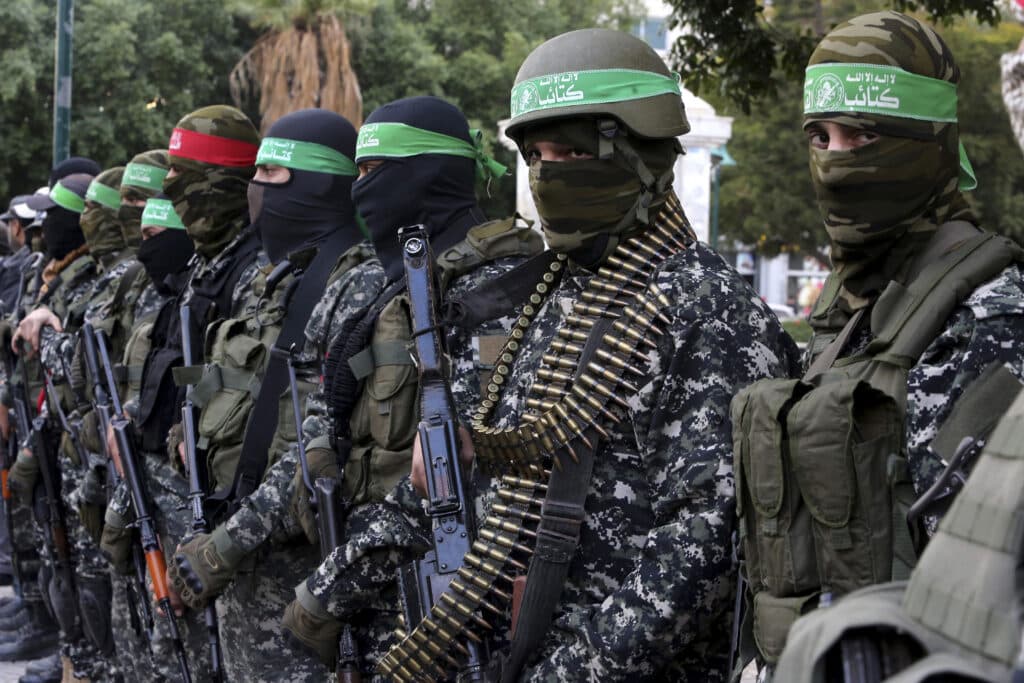
Two Strategies Spiralling Downwards in Gaza
The Gaza War is now well into its second month with fighting still intense. The Hamas-run Health ministry in Gaza claims that more than 11,000 people have been killed in Gaza so far. About 4, 500 percent of these have reportedly been children under 18, which has some credibility given youth dominates Gaza’s demography.
This high death toll, combining with dimming memories of the some 1200 Israelis brutally killed by Hamas on October 7, is leading to sharply increasing pressure being placed on Israel by the US and many other countries to stop the war. Crucially, Secretary of State Anthony Blinken has declared: “Far too many Palestinians have been killed, far too many have suffered these past weeks”
Israel’s military strategy is assessed as having five aims: dismantle Hamas, limit civilian casualties, reduce risks to Israeli soldiers, recover the hostages and avoid widening the war beyond Gaza. Of these somewhat conflicting objectives, dismantling Hamas appears Israel’s primary ambition and the main intent of the ongoing incursion into Gaza.
Left unsaid is what happens post-war. Israel’s unwillingness to say what comes after the fighting is feeding into the ceasefire calls by outsiders. Is the fighting aiming to build a better peace or simply revenge? A just war should lead to a just peace. However, the current indications are that Israel seeks a return to the status quo ante, which is to the conditions that led to the current war. Israel will return to so-called ‘mowing the grass’, in short maintaining the world’s largest open-air prison.
The US is seemingly alone in having some potential leverage on Israel for a just peace. Reputedly, President Nixon in 1973 used the provision of military aid to Israel to end the war in a manner that the US wished. This led onto a real peace with Egypt. It appears something similar might be underway today given the public calls by President Biden on the two-state solution and Secretary Blinken’s comments about the desired shape of the post war peace.
The other sides’ strategy is also problematic. Hamas’s current military strategy is demonstrably based around forcing the Israelis to fight Hamas soldiers in areas heavily populated by civilians, including many children. To be fair, non-western forces have been using this as a tactic for decades, sensing the laws of war will constrain Western forces actions in urban areas.
Hamas has though seemingly elevated this tactic to a new level by incorporating the deaths of civilians into its strategy. Hamas has purposefully placed its military forces and logistic support facilities around, and it seems underneath, specific Gaza City hospitals and other infrastructure at which some tens of thousands of its civilians are now apparently clustered. To destroy Hamas military capabilities within such an urban environment, contemporary military thinking holds that Israel must now use considerable firepower close to large numbers of Gaza’s civilians, making heavy collateral damage and numerous unintended deaths a very probable outcome.
Hamas now appears counting on external pressure driven by the high level of civilian deaths, particularly those of women and children, to force Israel to stop its attack and allow Hamas to survive and claim some form of victory. There might seem an echo of military necessity here. Hamas seemingly cannot survive against Israel’s overwhelming military might without such an approach. The rebuttal is that Hamas should have thought much harder and been a lot more innovative; its people’s lives are being hazarded.
In this, it’s possible that Hamas’s leadership hopes the mounting external pressure on Israel will directly lead to a two-state solution. That would be an outcome Gazans – and some senior Israeli ex-politicians – would applaud. Israel has proven unwilling over the last three decades to give the Palestinians a state, could external pressure force Israel to this time?
Some have observed that Yahya Sinwar, the leader of Hamas in Gaza, is willing to sacrifice his and other’s lives to gain Palestinians a state of their own. In this, he may have significant local support. A recent poll found some 55% of Gazans considered armed struggle the most effective means of gaining statehood. For Sinwar and many Gazans, the ends sought may justify the means.
Hamas’s strategy has a logic but is ultimately immoral and against the laws of war. In other wars, armies did not place their defending forces near hospitals. Indeed, cities have at times been declared open and the defending army withdrawn to avoid civilian deaths. In that regard, Israel has offered to cease fire if the hostages are released; to save Gazan lives, surely Hamas could at least try this approach and regain some moral high ground.
On the other hand, Israel is playing into Hamas’s strategy but seems unable to find a way to avoid it. If Israel wants to sidestep the increasing pressure for a ceasefire and continue dismantling Hamas, it needs to quickly find some innovative ways to undermine Hama’s strategy of sacrificing Gazans. Strategically, both sides seem incapable of thinking anew.
Peter Layton is a visiting fellow at the Griffith Asia Institute, an associate fellow at the Royal United Services Institute and the author of Grand Strategy.
This article was originally published by RealClearDefense and made available via RealClearWire.



